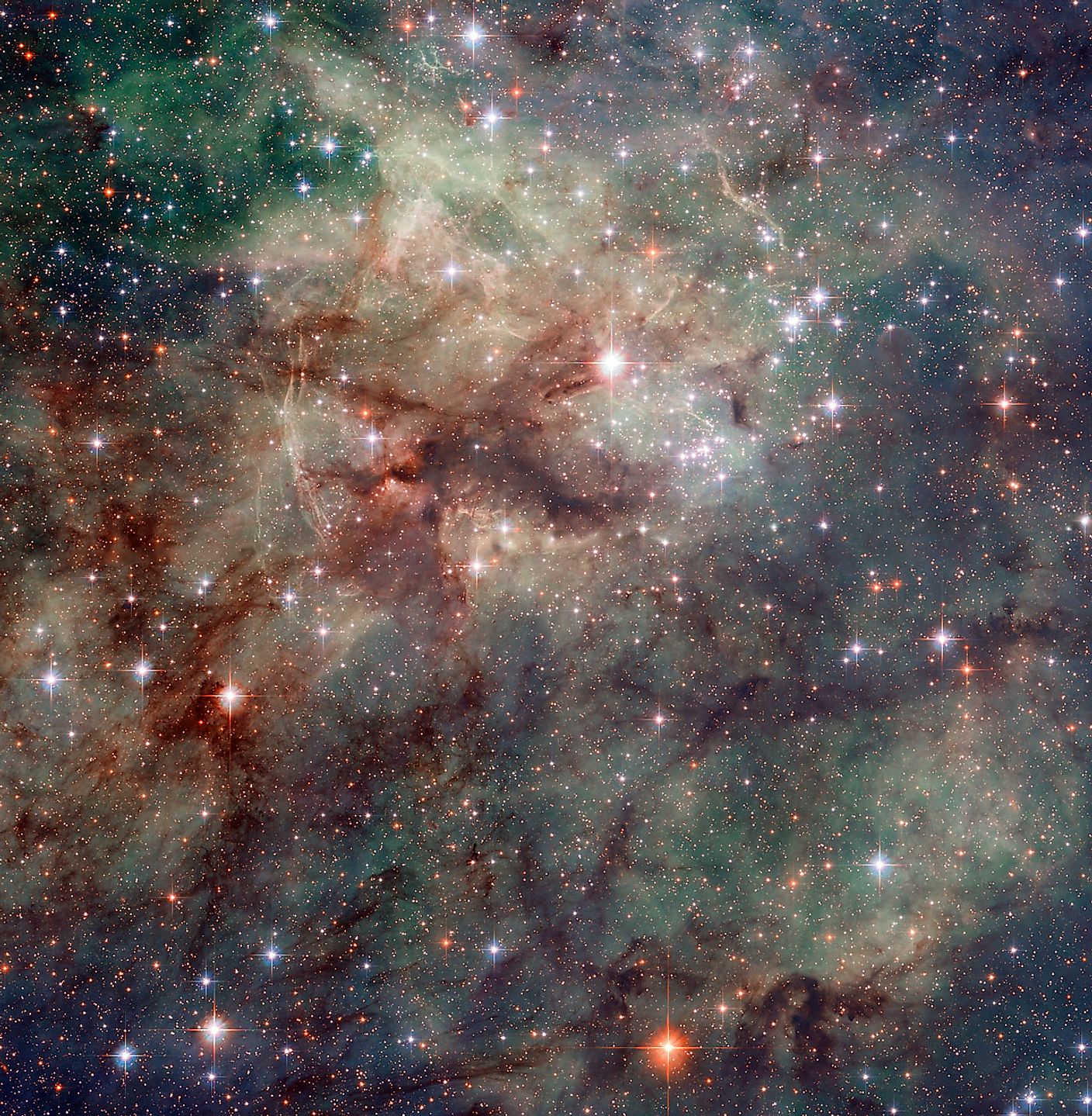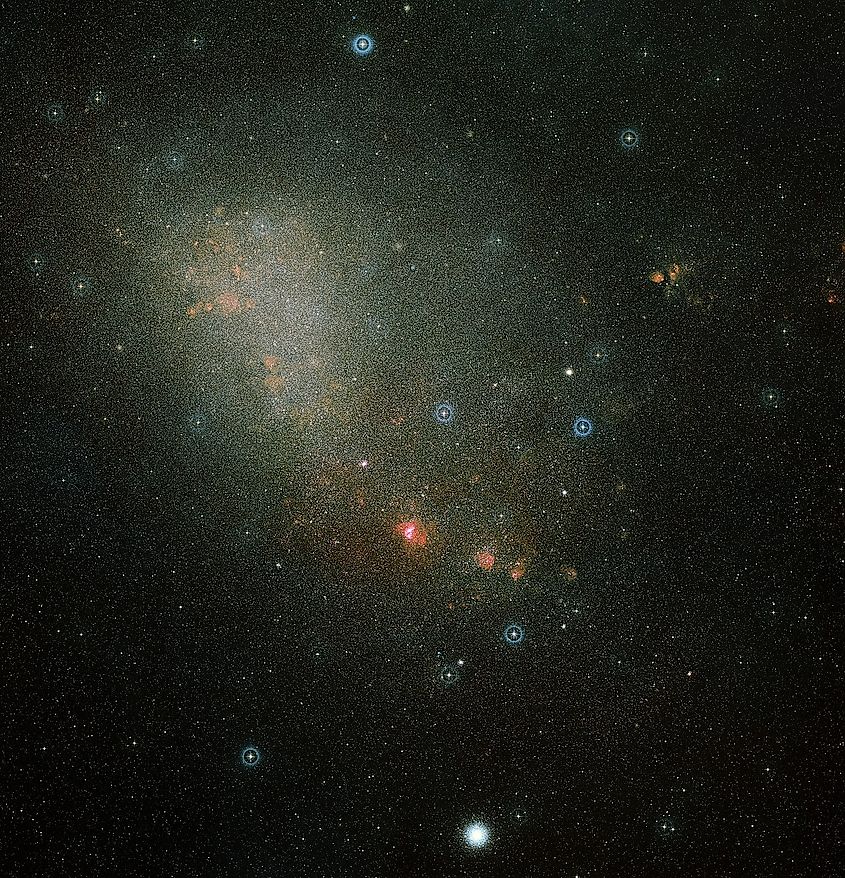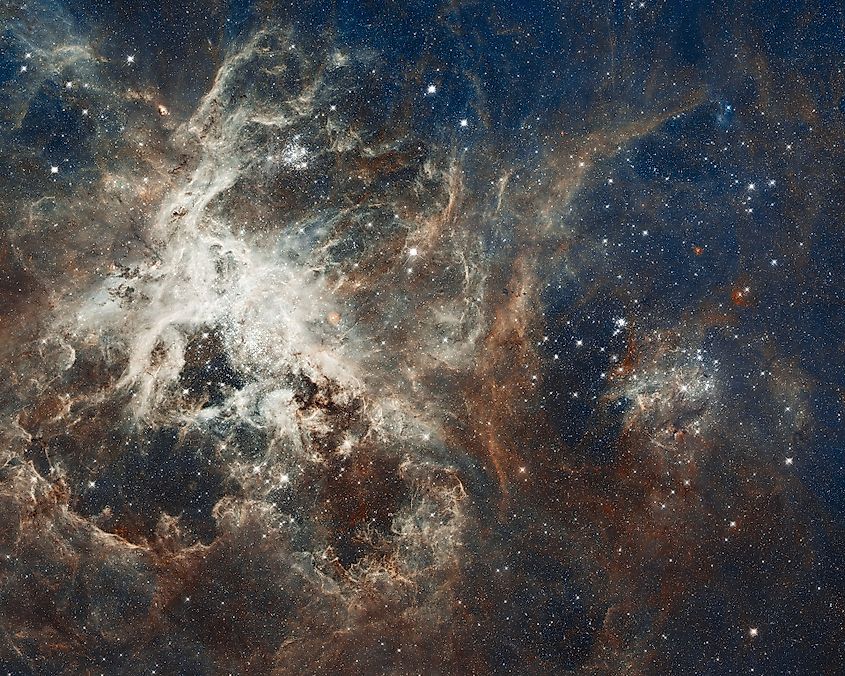
Does The Milky Way Have Satellite Galaxies?
Like how planets have moons, galaxies can also have natural satellites. These natural satellites generally come in the form of smaller galaxies that orbit larger galaxies. In the case of the Milky Way, it is orbited by two satellite galaxies: the Small Magellanic Cloud (SMC) and the Large Magellanic Cloud (LMC). What are these two galaxies and how do they interact with the Milky Way?
The Small Magellanic Cloud

- The SMC and LMC are both dwarf galaxies that orbit the Milky Way that are visible from the Southern Hemisphere. The SMC is the smaller of the two with a diameter of 7,000 light years. The SMC is also the further of the two, located approximately 200,000 light years away. The SMC is currently defined as an irregular dwarf galaxy, yet its structure suggests that it may have once been a spiral galaxy. The SMC probably didn’t form in orbit around the Milky Way, and instead was likely captured by the Milky Way’s gravity many billions of years ago. The gravitational pull of the Milky Way distorted the shape of the SMC, causing it to become an irregular galaxy and lose its spiral arms. Interestingly, the gravitational interactions between the SMC and the Milky Way have resulted in a high rate of star formation within the SMC. The SMC is home to a large number of high mass blue stars as a result of the rate of star formation. The SMC contains hundreds of millions of stars and is estimated to have a mass of around seven billion suns.
The Large Magellanic Cloud

The LMC is twice the size as its smaller counterpart, and it is also located closer to the Milky Way than the SMC. With a diameter of 14,000 light years, the LMC is approximately 160,000 light years away. Like the SMC, the LMC likely formed outside of the Milky Way’s vicinity and was later captured by our galaxy’s gravitational pull. Also like the SMC, the LMC is defined as an irregular galaxy that was once a spiral galaxy, yet it has managed to maintain some of its spiral shape. The gravitational interactions between the LMC and the Milky Way has resulted in high rates of star formation, rates that are much higher than those found in the SMC. In fact, the LMC is one of the most active galaxies in the Local Group. Within the LMC is the famous Tarantula Nebula, which happens to be one of the most active star-forming regions ever discovered in the universe. The Tarantula Nebula is one of the largest known stellar nurseries with a diameter of nearly 2,000 light years.
The LMC is currently moving closer to the Milky Way as the gravitational pull of our home galaxy pulls it closer. Astronomers believe that the two galaxies are currently in the process of merging together, and that in the next 2.4 billion years, the LMC will completely merge with the Milky Way and become part of our galaxy.











